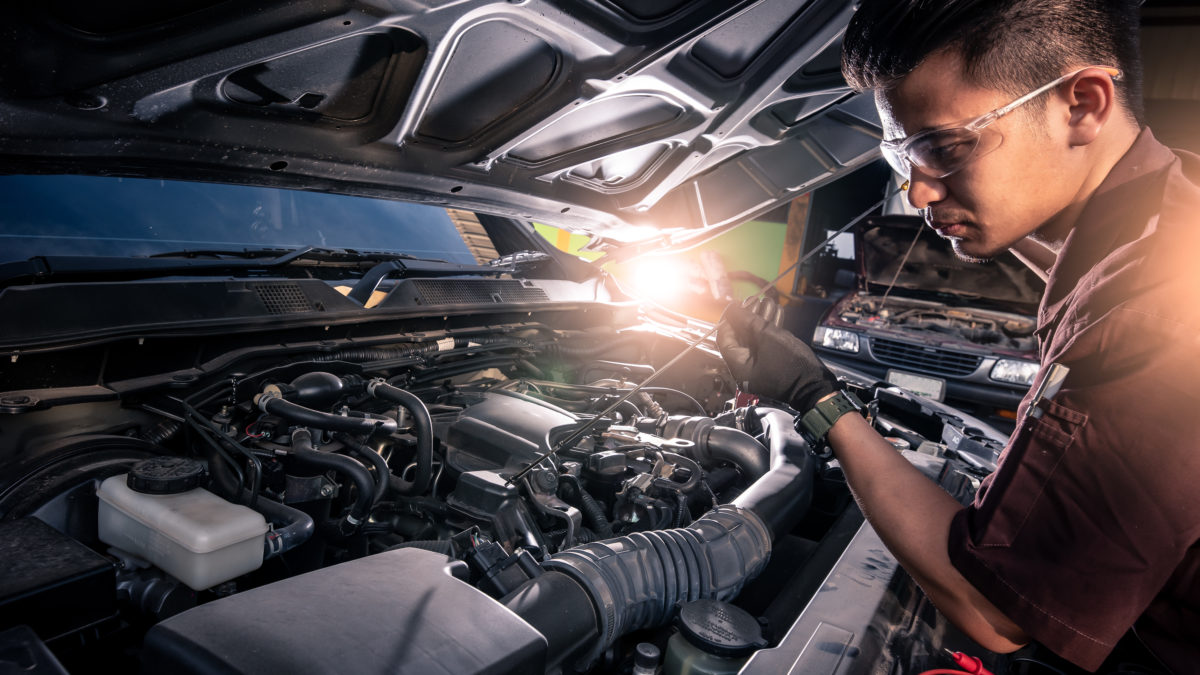Free video converter to mp4. As everyone knows, every vehicle needs an oil change every 3000 to 5000 Kilometers. If you look in your vehicle's manual, you will know how often you should get the oil changed. But, why should we get it changed? Well, a regular oil change is one of the least expensive maintenance services that your vehicle needs. Oil keeps the components of the engine working efficiently and helps to reduce the accumulation of carbon and varnish without any car repairs. There are several other benefits that your vehicle would enjoy with a regular oil change. You can check out the oil & change the oil in your car from our car repairs Heidelberg mechanics. They are as follows:
Another professional mechanic who dispenses free advice online, Steve is an ASE Certified Master Automotive Technician who says he started his blog out of pure anger from seeing so many friends and customers flat-out lied to by previous mechanics. Recommended post: Squeaking brakes 5. Car Talk's Do-It-Yourself Guide. The Humble Mechanic is a real life Volkswagen mechanic sharing his knowledge on working on vehicles, particularly VWs. On this blog, you'll learn about car repairs, tools, and everything automotive. The Truth About Cars Votes: 6. One of the best ways for auto mechanics to share answers that people need is through a blog. If you're not sure where to start, here are six blogs sure to get your creative juices flowing. Every day, search engines teem with questions about cars.

The growth of electronics content inside the automobile has already had a dramatic effect on the way in which vehicle models are designed and built. As a direct consequence of this, the biggest technical change is now beginning to happen – one that overturns the traditional relationship between the car manufacturer and the car owner. Youtube video downloader online.

The growth of electronics content inside the automobile has already had a dramatic effect on the way in which vehicle models are designed and built. As a direct consequence of this, the biggest technical change is now beginning to happen – one that overturns the traditional relationship between the car manufacturer and the car owner. Youtube video downloader online.
With many subsystems now controlled by microprocessors running software, it is now possible to alter the behavior of the vehicle with an update and introduce completely new features and functionality by merely updating software. The high profile Tesla brand of high performance electric vehicles has been one of the companies pioneering this approach by releasing software and firmware updates that give existing models the ability to drive themselves. Instead of buying a car with a specific, fixed set of features, vehicles are being upgraded via firmware over the air (FOTA) without the need to visit a dealership.
Faced with so many electronic subsystems now in the vehicle, high data rates are essential. Without the ability to download and program devices quickly, the car could potentially become unusable for hours at a time. On the wireless side, this is requiring 802.11ac Wi-Fi speeds and very soon this will be ramped up to 802.11ax speeds that can potentially exceed Gigabit/second data rates.
How do i install wow addons on twitch. Automotive Ethernet that can support Gigabit speeds is also now being fitted so that updates can be delivered as fast as possible to the many electronic control units (ECUs) around the car. The same Ethernet backbone is proving just as essential for day-to-day use. The network provides high resolution, real-time data from cameras, LiDAR, radar, tire pressure monitors and various other sensors fitted around the body, each of which is likely to have their own dedicated microprocessor. The result is a high performance computer based on distributed intelligence. And this, in turn, can tap into the distributed intelligence now being deployed in the cloud.
Blog Automotivethe Mechanics
The beauty of distributed intelligence is that it is an architecture that can support applications that in many cases have not even been thought of yet. The same wireless communication networks that provide the over-the-air updates can relay real-time information on traffic patterns in the vicinity, weather data, disruptions due to accidents and many other pieces of data that the onboard computers can then use to plan the journey and make it safer. This rapid shift towards high speed intra- and inter-vehicle connectivity, and the vehicle-to-anything (V2X) communication capabilities that have thus resulted will enable applications to be benefitted from that would have been considered pure fantasy just a few years ago,
The V2X connectivity can stop traffic lights from being an apparent obstacle and turn them into devices that provide the vehicle with hints to save fuel. If the lights send out signals on their stop-go cycle approaching vehicles can use them to determine whether it is better to decelerate and arrive just in time for them to turn green instead of braking all the way to a stop. Sensors at the junction can also warn of hazards that the car then flags up to the driver. When the vehicle is able to run autonomously, it can take care of such actions itself. Similarly, cars can report to each other when they are planning to change lanes in order to leave the freeway, or when they see a slow-moving vehicle ahead and need to decelerate. The result is considerably smoother braking patterns that avoid the logjam effect we so often see on today's crowded roads. The enablement of such applications will require multiple radios in the vehicle, which will need to work cooperatively in a fail-safe manner.
Such connectivity will also give OEMs unprecedented access to real-time diagnostic data, which a car could be uploading opportunistically to the cloud for analysis purposes. This will provide information that could lead to customized maintenance services that could be planned in advance, thereby cutting down diagnostic time at the workshop and meaning that technical problems are preemptively dealt with, rather than waiting for them to become more serious over time.
Automotive Blog Sites
There is no need for automobile manufacturers to build any of these features into their vehicle models today. As many computations can be offloaded to servers in the cloud, the key to unlocking advanced functionality is not wholly dependent on what is present in the car itself. The fundamental requirement is access to an effective means of communications, and that is available right now through high speed Ethernet within the vehicle plus Wi-Fi and V2X-compatible wireless for transfers going beyond the chassis. Both can be supplied so that they are compliant with the AEC-Q100 automotive standard – thus ensuring quality and reliability. With those tools in place, we don't need to see all the way ahead to the future. We just know we have the capability to get there.
